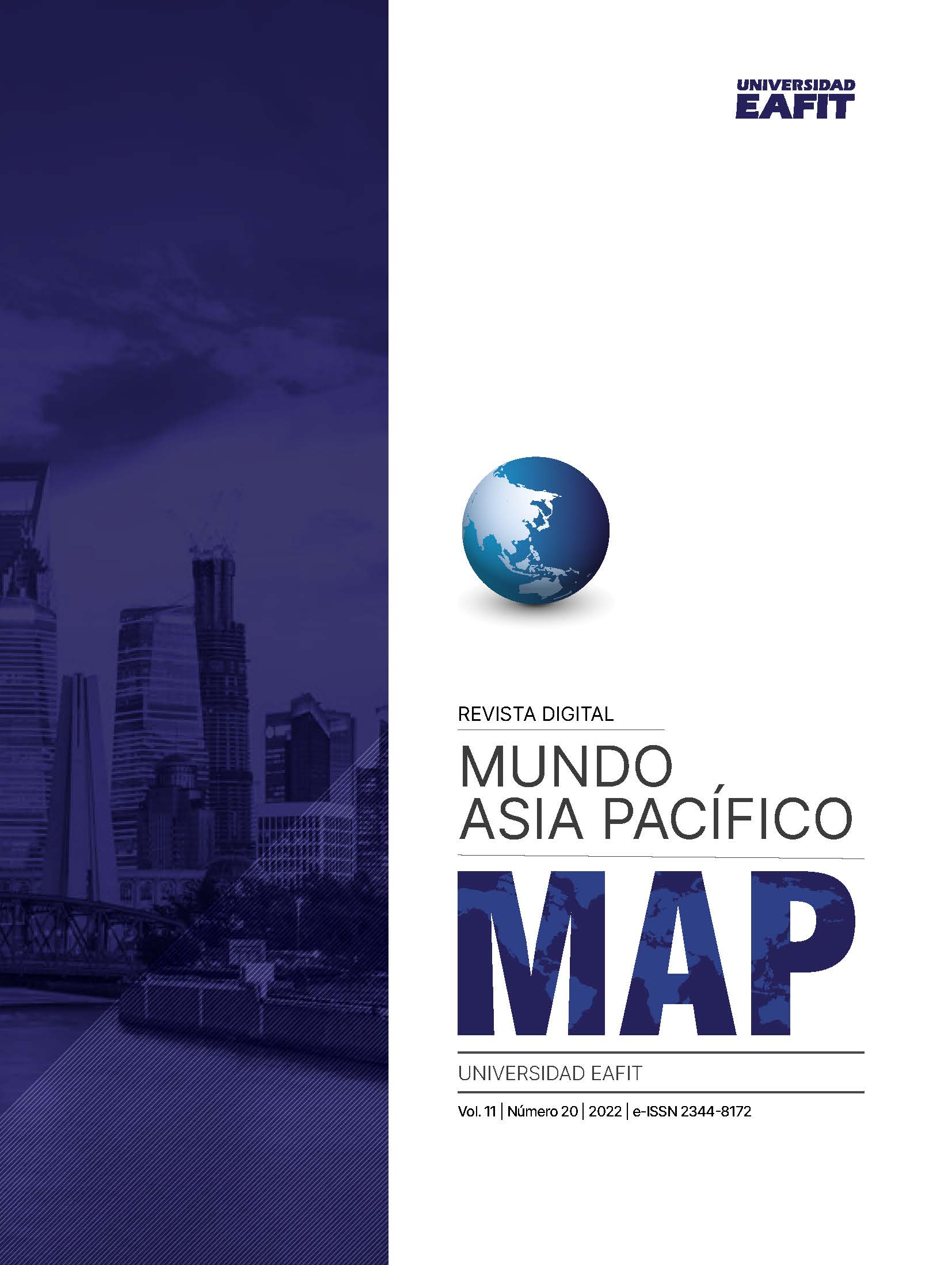La Iniciativa de la Franja y la Ruta: la herramienta China del siglo XXI para el crecimiento económico
Main Article Content
Keywords
China, Inversión, Infraestructura, Desarrollo, Cooperación internacional, Préstamos financieros, Política exterior, Comercio, Transporte, Créditos, Deudas
Resumen
La Iniciativa de la Franja y la Ruta (IFR)es un proyecto de cooperación internacional propuesto y liderado por China, en donde busca promover su desarrollo social, comercial y económico con los actores involucrados, a través de la implementación de una política exterior fuerte y efectiva y la creación de acuerdos bilaterales entre China y otros países. “Mediante la coordinación de políticas, el IFR busca ampliar los intereses compartidos y llegar a acuerdos de cooperación en múltiples niveles” (Dunford & Liu, 2019), permitiendo el flujo de inversiones y préstamos financieros para iniciar la construcción de grandes proyectos de infraestructura, estableciendo un mundo más interconectado con China como centro. Todos estos planes de infraestructura y desarrollo van acompañados de una fuerte política exterior china con el objetivo de obtener la mayor expansión posible y un alcance que permita su desarrollo económico, aumentar su influencia global y facilitar sus flujos comerciales, y que ya se han puesto en marcha desde hace varios años. Durante la década de los 70, China estaba trabajando en un proceso de modernización económica en dos etapas. La primera etapa se conoce como “Acogida”, que buscaba promover la innovación y el espíritu empresarial dentro de China. Sin embargo, resulta particularmente interesante analizar la segunda etapa conocida como estrategia de “Salida”. Esta política, nacida en 1999 debido a la crisis financiera asiática, buscaba promover la inversión extranjera directa en los países de la región para apoyar el comercio y los negocios internacionales. Durante ese periodo, China empezó a considerar el traslado de la producción al extranjero con el fin de buscar beneficios en términos de costos, apertura de nuevos mercados y adquisición de tecnología y divisas, los cuales se verían potencializados tras la entrada de China a la Organización Mundial del Comercio (OMC) en 2001 y el lanzamiento efectivo de del proceso de internacionalización para las empresas chinas en el 2008 con el cambio en las políticas de inversión.
Descargas
Referencias
Leonard K. Cheng, Three questions on China’s “Belt and Road Initiative”, China Economic Review, Volume 40, 2016, Pages 309-313, ISSN 1043-951X, https://doi.org/10.1016/j. chieco.2016.07.008.
Michael Dunford, Weidong Liu, Chinese perspectives on the Belt and Road Initiative, Cambridge Journal of Regions, Economy and Society, Volume 12, Issue 1, March 2019, Pages 145–167, https://doi.org/10.1093/cjres/rsy032
Johnston, L. A. (2019, 1 enero). The Belt and Road Initiative: What is in it for China? Wiley Online Library. https://onlinelibrary.wiley.com/doi/full/10.1002/app5.265
François de Soyres, Alen Mulabdic, Siobhan Murray, Nadia Rocha, Michele Ruta, How much will the Belt and Road Initiative reduce trade costs, International Economics, Volume 159, 2019, Pages 151-164, ISSN 2110-7017, https://doi.org/10.1016/j.inteco.2019.07.003.
Baogang He (2019) The Domestic Politics of the Belt and Road Initiative and its Implications, Journal of Contemporary China, 28:116, 180-195, DOI: 10.1080/10670564.2018.1511391
Michael Clarke (2018) The Belt and Road Initiative: Exploring Beijing’s Motivations and Challenges for its New Silk Road, Strategic Analysis, 42:2, 84-102, DOI: 10.1080/09700161.2018.1439326
François de Soyres, Alen Mulabdic, Michele Ruta, Common transport infrastructure: A quantitative model and estimates from the Belt and Road Initiative, Journal of Development Economics, Volume 143, 2020, 102415, ISSN 0304-3878, https://doi.org/10.1016/j. jdeveco.2019.102415.
Xin Wen, Hoi-Lam Ma, Tsan-Ming Choi, Jiuh-Biing Sheu, Impacts of the Belt and Road Initiative on the China-Europe trading route selections, Transportation Research Part E: Logistics and Transportation Review, Volume 122, 2019, Pages 581-604, ISSN 1366-5545, https://doi.org/10.1016/j.tre.2019.01.006.
Linhui Yu, Dan Zhao, Haixia Niu, Futao Lu, Does the belt and road initiative expand China’s export potential to countries along the belt and road?, China Economic Review, Volume 60, 2020, 101419, ISSN 1043-951X https://doi.org/10.1016/j.chieco.2020.101419.
Choudhury, S. R. (2021, 5 octubre). China needs coal, and Australia has it. But something’s standing in the way. CNBC. https://www.cnbc.com/2021/10/05/china-power-supply-crunch-relationship-with-australia-gdp-outlook.html
Dunford, M., & Liu, W. (2019, 12 enero). Chinese perspectives on the Belt and Road Initiative. OUP Academic. https://academic.oup.com/cjres/article/12/1/145/5288447?login=true
China’s «Going Out» Strategy. (2021). Diplomatic Courier. https://www.diplomaticourier. com/posts/china-s-going-out-strategy
About AIIB - AIIB. (2021). Asian Infrastructure Investment Bank. https://www.aiib.org/en/about-aiib/index.html
Grieger, G. (2021). Towards a joint Western alternative to the Belt and Road Initiative? |Think Tank | European Parliament. European Parliamentary Research Service. https://www. europarl.europa.eu/thinktank/en/document/EPRS_BRI(2021)698824

